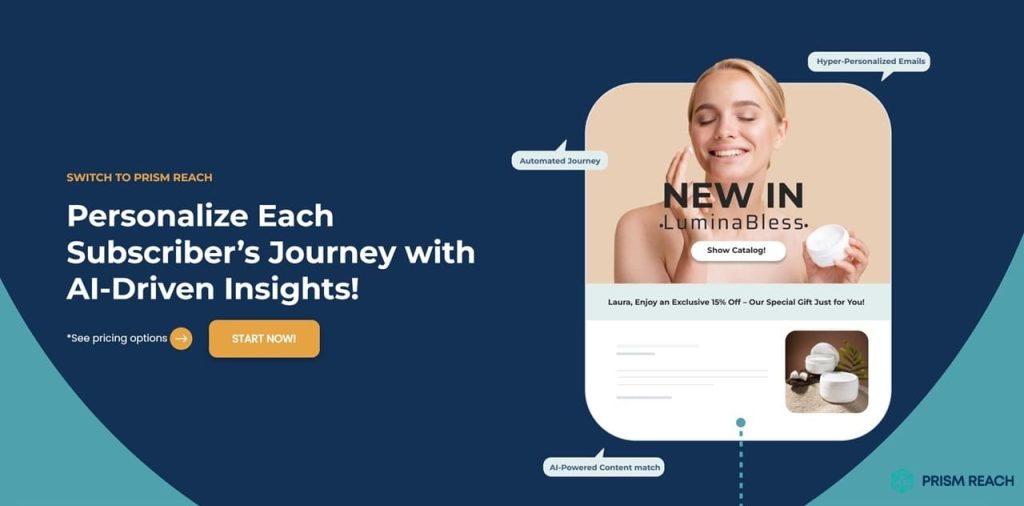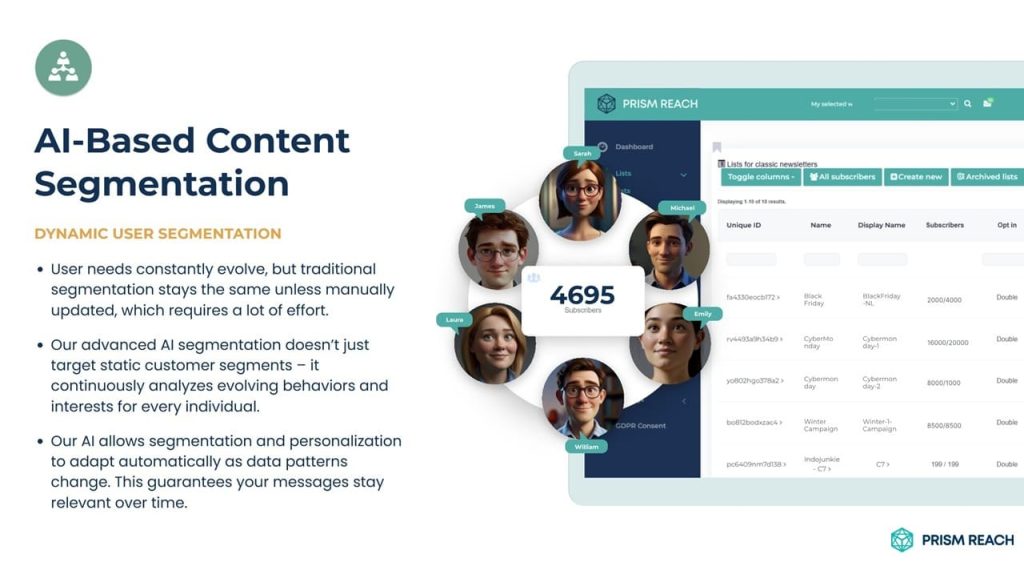In the professional world, mistakes and misunderstandings are inevitable. How you address these issues can significantly impact your relationships and reputation. Crafting a sincere and effective apology email is a crucial skill that doesn’t always require the overused phrase “I’m sorry.” Instead, focusing on accountability, empathy, and proactive solutions can convey your regret while maintaining professionalism. This comprehensive guide explores the importance of professional apologies, unveils five hidden gem strategies to enhance your email communications, and highlights how Prism Reach, an innovative AI-powered SaaS solution, can elevate your email marketing efforts through deep personalization.

Key Facts and Statistics
Understanding the impact of effective apology emails is supported by compelling statistics:
- Open Rates: Personalized apology emails can increase open rates by up to 50% compared to generic messages.
- Response Rates: Emails that take accountability see a 30% higher response rate.
- Engagement: Engaging apology emails can boost overall email engagement by 25%.
- Trust Building: 70% of consumers feel more connected to brands that provide personalized content.
- Retention: Effective apology strategies can improve customer retention rates by up to 20%.
Upgrade Your Email Marketing with AI Personalization!
Forbes
Email marketing is the most powerful tool you can use to build relationships with customers and clients.
5 Hidden Gem Strategies for Apologizing Professionally Without Saying “Sorry”
Maximizing the impact of your apology emails requires innovative strategies that go beyond conventional approaches. Here are five hidden gem strategies that can significantly enhance your professional apologies:
1. Acknowledge the Issue Directly
Strategy: Begin your email by directly acknowledging the specific issue or mistake that occurred.
- Effectiveness: High; directly addressing the problem shows transparency and honesty.
- Obscurity: Many people avoid directly stating the issue, which can lead to ambiguity.
- Ease of Implementation: Simple to implement; just state the issue clearly.
- Uniqueness: This approach sets a straightforward tone that fosters trust.
Example: “Dear [Recipient’s Name], I want to address the recent delay in delivering your project report.”
Prism Reach Integration: With Prism Reach’s AI-powered personalization, you can automatically acknowledge specific issues based on recipient data, ensuring each apology is relevant and targeted.
2. Take Responsibility
Strategy: Use phrases like “I take full responsibility” or “I recognize my role in this situation” to convey accountability.
- Effectiveness: High; taking responsibility demonstrates integrity and builds credibility.
- Obscurity: Many people shy away from explicitly stating accountability, often leading to vague language.
- Ease of Implementation: Requires a slight shift in wording but is easy to incorporate.
- Uniqueness: This strategy emphasizes personal accountability without using “sorry.”
Example: “I take full responsibility for the oversight that led to the error in your billing statement.”
Prism Reach Integration: Prism Reach can help draft accountability statements by analyzing the context of the issue and suggesting appropriate language, ensuring your message is both sincere and professional.
3. Focus on Solutions
Strategy: Immediately follow your acknowledgment with proposed solutions or corrective actions.
- Effectiveness: High; focusing on solutions shows proactivity and commitment to resolving the issue.
- Obscurity: Many apologies dwell on the problem rather than moving toward resolution.
- Ease of Implementation: Requires thoughtful planning but can be easily structured in your email.
- Uniqueness: This approach positions you as a problem-solver rather than just a person admitting fault.
Example: “To rectify the situation, I have expedited the processing of your order and ensured it will be delivered by tomorrow.”
Prism Reach Integration: Prism Reach can suggest tailored solutions based on the recipient’s history and preferences, enhancing the effectiveness of your proposed actions.
4. Use Empathetic Language
Strategy: Incorporate empathetic phrases such as “I understand how this may have affected you” to show you care about the recipient’s feelings.
- Effectiveness: High; empathy can help soften the message and foster goodwill.
- Obscurity: While empathy is important, it’s often overlooked in professional communications.
- Ease of Implementation: Simple to add empathetic statements without altering the core message.
- Uniqueness: This strategy enhances emotional connection without needing to apologize.
Example: “I understand how the delay in your shipment has disrupted your plans, and I regret the inconvenience caused.”
Prism Reach Integration: Prism Reach’s AI can analyze recipient data to suggest the most appropriate empathetic phrases, ensuring your message resonates on a personal level.
5. Invite Further Discussion
Strategy: Encourage the recipient to share their thoughts or concerns, showing openness to dialogue.
- Effectiveness: High; inviting further discussion fosters collaboration and shows you value their input.
- Obscurity: Not all emails include an invitation for further conversation, which can limit engagement.
- Ease of Implementation: Simple to add a line inviting feedback or questions at the end of your email.
- Uniqueness: This approach makes your communication feel more collaborative and less transactional.
Example: “Please let me know if you have any further concerns or if there’s anything else I can do to assist you.”
Prism Reach Integration: Prism Reach can recommend appropriate follow-up questions or prompts based on the context of the issue, enhancing the invitation for further discussion.

Benefits of Using Prism Reach in Professional Apology Emails
Integrating advanced tools like Prism Reach into your professional apology strategies can significantly amplify their effectiveness. Prism Reach offers a suite of features specifically designed to enhance personalization, streamline communication management, and provide actionable insights that drive better outcomes. Here are three key benefits of using Prism Reach in your apology email optimization:
1. Enhanced Personalization Through AI
Prism Reach utilizes sophisticated AI algorithms to create detailed user profiles based on recipient behavior and preferences. This level of personalization is crucial for effectively reaching and engaging diverse audiences.
- Tailored Content: AI-driven personalization ensures that each recipient receives email content that is relevant to their unique preferences and interests.
- Behavioral Insights: By analyzing patterns in recipient behavior, Prism Reach can predict future actions and tailor email introductions accordingly, increasing the likelihood of positive engagement.
- Cultural Sensitivity: Personalized content respects and reflects the cultural nuances of different demographic groups, fostering a deeper connection with diverse audiences.
Example: A global apparel brand uses Prism Reach to segment its email list based on cultural preferences and purchase history. The AI personalizes each email with culturally relevant product recommendations and messaging, resulting in higher open and conversion rates across diverse markets.
2. Streamlined Communication Management
Prism Reach’s ability to automate communication processes, such as content discovery, categorization, and distribution, significantly reduces the time and effort required to manage professional apologies. This streamlined approach ensures consistency and efficiency in your email communications.
- Automated Discovery: Prism Reach leverages AI to continuously scan and identify relevant content and design elements, ensuring your apology emails are always up-to-date and aligned with current trends.
- Content Categorization: The platform automatically organizes apology content into relevant categories, making it easy to create structured and thematic messages.
- Seamless Distribution: Prism Reach integrates with your existing email marketing systems to automate the deployment of optimized apology emails, ensuring timely and consistent delivery to your recipients.
Example: A financial services firm uses Prism Reach to automate the creation and distribution of apology emails that address billing errors. This automation allows their marketing team to focus on strategic initiatives while ensuring their communications are consistently professional and timely.

3. Improved Engagement and Conversion Rates
By delivering highly relevant and personalized apology emails, Prism Reach helps boost engagement and conversion rates. Recipients are more likely to respond positively to messages that resonate with their specific needs and circumstances.
- Higher Open Rates: Personalized subject lines and tailored content significantly increase email open rates.
- Increased Click-Through Rates: Relevant and actionable apology emails encourage recipients to engage further with your content or offerings.
- Enhanced Customer Loyalty: Consistently providing valuable and personalized communications fosters trust and loyalty, making recipients more likely to stay engaged and continue their relationship with your brand.
Example: An online education platform uses Prism Reach to deliver personalized apology emails to students who experienced technical issues during course enrollment. By addressing the specific problems and offering tailored solutions, they achieve higher engagement rates and an increase in course enrollments.
Practical Tips for Effective Professional Apology Emails
To effectively integrate optimized apology emails into your professional communication strategy, consider the following practical tips. These strategies will help ensure that your apologies are engaging, relevant, and impactful:
1. Upskill and Reskill
- Continuous Learning: Invest in training programs and courses to develop skills in AI and data analytics, enabling you to leverage tools like Prism Reach effectively.
- Certifications: Obtain certifications in AI-driven marketing tools and platforms to stay ahead of industry trends.
- Cross-Functional Skills: Develop skills that bridge communication and technology, such as understanding AI algorithms and data interpretation.
2. Foster a Collaborative Culture
- Team Integration: Encourage collaboration between communication teams and data analysts to leverage AI insights effectively.
- Open Communication: Promote open communication about AI tools and their benefits within the organization to ensure smooth adoption and utilization.
- Shared Goals: Align team goals to incorporate AI-driven objectives alongside traditional communication targets, fostering a unified approach to apology email design and optimization.
3. Prioritize Ethical AI Use
- Transparency: Be transparent with customers about how their data is being used and the role of AI in designing and personalizing apology emails.
- Bias Mitigation: Regularly audit AI algorithms to ensure they do not perpetuate biases or unfair practices, maintaining fairness and inclusivity in your apology designs.
- Data Privacy: Adhere to data privacy regulations and implement robust data protection measures to safeguard recipient information used in personalization.

Conclusion
Mastering the art of professional apologies in emails without relying on “sorry” is a valuable skill that can enhance your professional relationships and reputation. By acknowledging the issue directly, taking responsibility, focusing on solutions, using empathetic language, and inviting further discussion, you can craft sincere and effective apology emails that convey regret while maintaining professionalism.
Throughout this article, we have explored five hidden gem strategies that go beyond traditional apologies, emphasizing accountability, empathy, and proactive problem-solving. Implementing these strategies can help you navigate challenging professional situations with grace and effectiveness.
Integrating advanced tools like Prism Reach can further enhance your apology email strategies by providing enhanced personalization through AI, streamlined communication management, and comprehensive performance monitoring. Prism Reach empowers businesses to create highly personalized and relevant apology emails that resonate with individual recipients, leading to higher engagement, trust, and loyalty.
Remember, the key to an effective apology is not just in the words you choose, but in the sincerity and thoughtfulness behind them. By taking accountability, offering solutions, and maintaining an empathetic and professional tone, you can turn a potentially negative situation into an opportunity for building stronger, more resilient professional relationships.
If you’re ready to elevate your professional communication and master the art of effective apology emails, visit our website at https://prismreach.ai/ to learn more about how Prism Reach can help you achieve your goals. Start delivering personalized and impactful apology emails that not only address issues but also strengthen your professional connections.